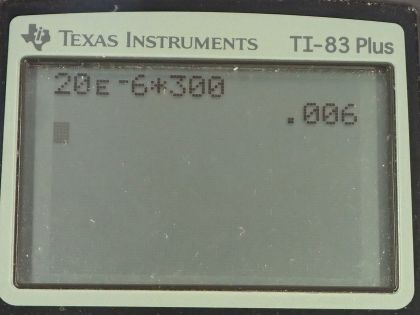Question
(a) During surgery, a current as small as applied directly to the heart may cause ventricular fibrillation. If the resistance of the exposed heart is , what is the smallest voltage that poses this danger? (b) Does your answer imply that special electrical safety precautions are needed?
Final Answer
- Static electricity can inadvertently build up to easily, so precautions must be taken against it.
Solution video
OpenStax College Physics, Chapter 20, Problem 90 (Problems & Exercises)

vote with a rating of
votes with an average rating of
.
Calculator Screenshots
Video Transcript
This is College Physics Answers with Shaun Dychko. During open heart surgery, the exposed heart has a resistance of only 300 ohms and the current that would cause ventricular fibrillation is only 20.0 microamps or 20.0 times 10 to the minus 6 amps and that compares with 100.0 milliamps that would be needed to cause ventricular fibrillation when the heart is, you know, covered by the ribs and the torso. So during open heart surgery, there's a very small voltage would cause this small current through such a small resistance and that voltage would be the product of the current times the resistance and that is 20.0 times 10 to the minus 6 amps times 300 ohms which is 6.00 millivolts. And static electricity can accidentally build up to this small voltage fairly easily so precautions have to be taken against static electricity.
